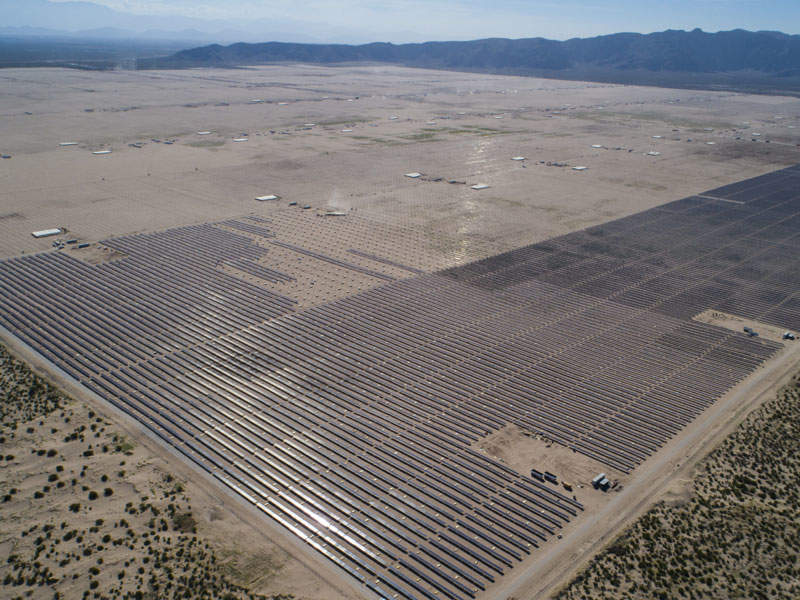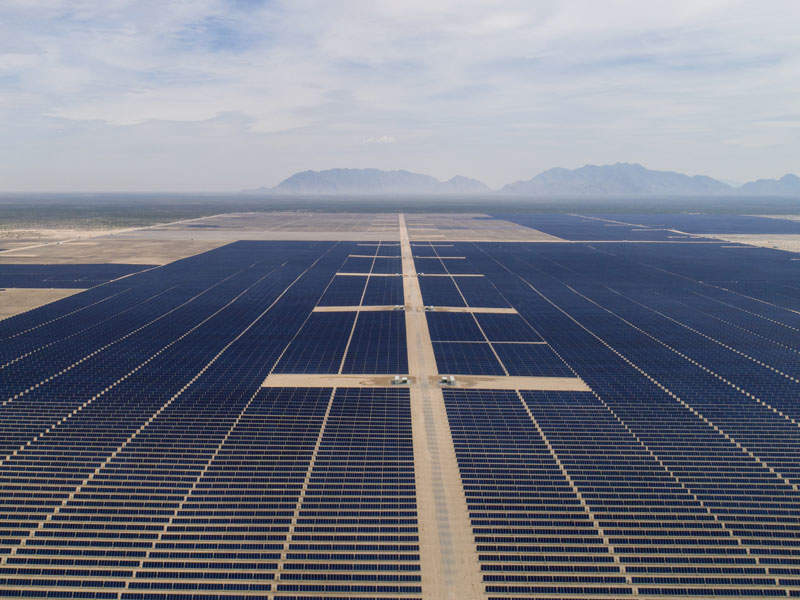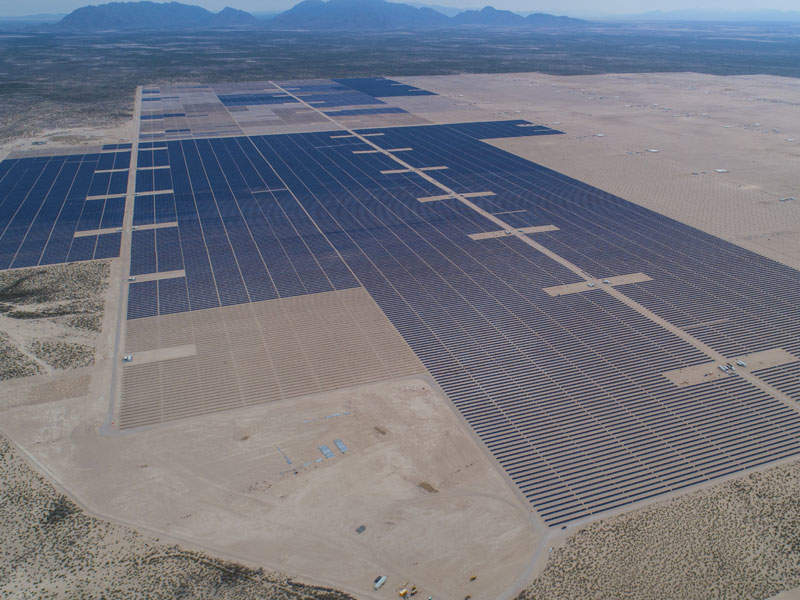Located in the Viesca region of Coahuila, Mexico, Villanueva is a 754MW solar photovoltaic (PV) power plant being developed by Enel Green Power Mexico (EGPM), a subsidiary of Enel. EGPM intends to develop the project as a model of innovative and sustainable work-site.
Estimated to cost $650m, the project is expected to be the biggest PV facility in the Americas. It is being developed in two phases, with phase one construction launched in March 2017.
Commercial operations of the plant commenced in March 2018 making it the first solar power project to be operational since the introduction of energy reforms in Mexico. The project is expected to be fully operational by the second half of 2018.
It is anticipated to generate more than 1.7TWh of electricity a year, which will be sufficient to serve more than 1.3 million households in Mexico. Further, it is estimated to offset more than 783,638t of carbon dioxide emissions from the atmosphere.
Project Gallery
-

Villanueva is a 754MW solar power project being developed in Viesca, Coahuila, Mexico. Image courtesy of Enel S.p.A.
-

Enel is investing approximately $650m in the Villanueva solar PV project. Image courtesy of Enel S.p.A.
-

The Villanueva solar project will be the biggest solar photovoltaic power project in the Americas, upon commencing operations in 2018. Image courtesy of Enel S.p.A.
EGPM intends to develop the project as a model of innovative and sustainable work-site.
Villanueva solar power plant make-up
The solar power plant is being installed with more than 2.3 million solar panels spread across 2,400ha in the Mexican semi-arid region. The first phase of the project, Villanueva 1, will have a capacity of 427MW, while the second phase, Villanueva 3, will have a capacity of 327MW.
EGPM set up two special purpose vehicles named Villanueva Solar and Parque Solar Villanueva Tres for developing Villanueva 1 and Villanueva 3.
Approximately 310MW of the power plant’s capacity came online by December 2017, including 190MW from Villanueva 3 and 120MW from Villanueva 1.
Construction of the Mexican solar power plant
EGP is using advanced construction technologies at Villanueva to make it a digital construction site. It is implementing full digitisation and automation processes during both the planning and execution phases of construction.
The project demonstrates the benefits of automation and digitisation in increasing productivity.
EGP tested the use of GPS-controlled machines on a portion of the plant for earth-moving. The technology helped in doubling productivity, and reducing fuel usage for transporting materials by 30%.
Further, automatic installation of cables enabled Enel to increase productivity by up to ten times.
Major focus during construction was placed on minimising environmental impacts, and controlling key factors such as energy use, waste recycling and water consumption.
NEXTracker technology at Villanueva
The Villanueva solar power plant features NEXTracker's SCADA (Supervisory Control and Data Acquisition) system for greater data connectivity.
The SCADA platform allows long-term data storage, while increasing the user experience. It also helps in speeding-up commissioning by automating tracker configuration steps.
The advanced independent row architecture system of the technology enabled the sequential commissioning of panels as the project progressed. It helped in commencing power generation in December 2017, nine months ahead of its anticipated start.
Power off-take
The power generated by the facility will be supplied to Mexico’s state-owned electricity generator, distributor and marketer, Federal Electricity Commission (Comisión Federal de Electricidad or CFE).
Enel entered long-term power purchase agreements (PPAs) with Mexico’s Centro Nacional de Control de Energía (CENACE) for sale of electricity to CFE.
Enel will supply electricity for 15 years and clean energy certificates (CELs) for 20 years to CFE, under the PPAs.
Contractors involved
SgurrEnergy (Wood Group) was engaged as the technical advisor and prepared the technical due diligence review report.
Enel Green Power contracted NEXTracker, a subsidiary of Flex, for the delivery and installation of the trackers and piers. The contractual scope included the supply of 26,000 piers and 1,624 miles (2,613km) of torque tubes.
NEXTracker sub-contracted Swinerton Renewable Energy (SRE) for the installation works.
Villanueva solar power project benefits
The project will support the Government of Mexico’s (GOM) goal to expand its power generation matrix by producing clean solar energy.
It, along with the 238MW Don José solar project, is expected to help Mexico realise its goal of generating 50% of total electricity from clean energy sources by 2050.
